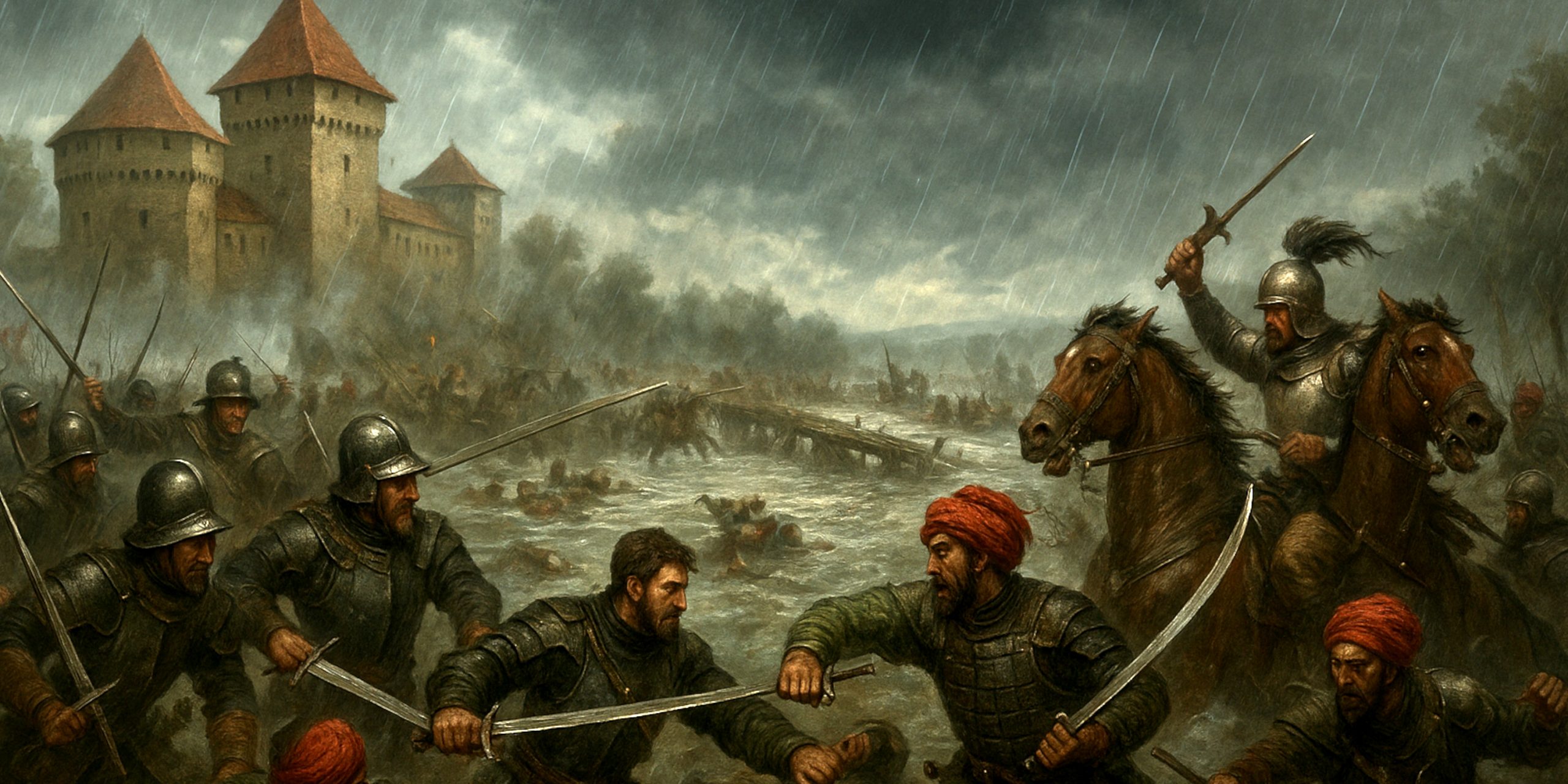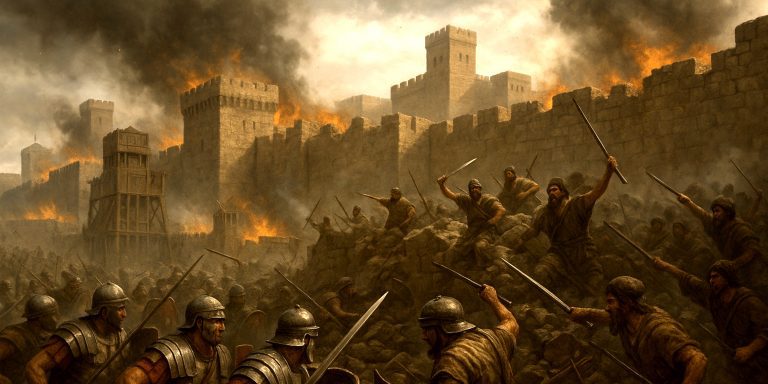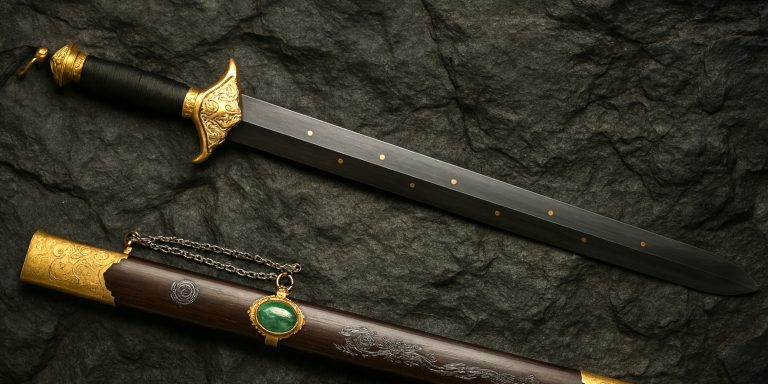
The Battle of Sisak, fought on 22 June 1593, stands as one of those obscure yet decisive engagements that quietly changed the direction of empires. Taking place near the fortress of Sisak (in modern-day Croatia), it saw Habsburg and Croatian forces deliver a bruising defeat to the Ottoman army, halting their push into the heart of the Habsburg territories.
At the time, it was less a grand crusade and more a desperate local defence, fought in rain-soaked fields where mud, steel, and misplaced confidence did the work of history.
Background
By the late 16th century, the Ottomans had been pressing steadily into the borderlands of Croatia and Hungary, testing the fragile defences of the Habsburg Monarchy. Sisak Fortress, at the junction of the Kupa and Sava rivers, was a strategic prize: whoever controlled it could command routes deep into central Europe.
When Hasan Pasha Predojević, the Ottoman governor of Bosnia, decided to take it, he assumed he would face the same weary resistance he had met elsewhere. He was wrong.
Forces
| Side | Commander(s) | Estimated Troops | Composition |
|---|---|---|---|
| Habsburg-Croatian Forces | Count Ruprecht von Eggenberg, Ban Toma Erdődy, Andreas von Auersperg | ~5,000–6,000 | German, Croatian, and Carniolan troops, supported by cavalry and arquebusiers |
| Ottoman Empire | Hasan Pasha Predojević, Ahmed Bey of Livno, Mustafa Bey of Kaniža | ~12,000–13,000 | Bosnian provincial troops, sipahis (cavalry), janissaries, and artillery units |
While the Ottomans had the numbers and artillery, the defenders had superior coordination, terrain advantage, and, crucially, a fortress that refused to surrender.
Leaders and Troop Composition
- Count Ruprecht von Eggenberg – The Austrian commander who brought discipline and German precision to the field.
- Ban Toma Erdődy – The Croatian leader, a veteran of countless border skirmishes, whose men knew every inch of the land.
- Andreas von Auersperg – Nicknamed the Carniolan Achilles for his ferocity in battle.
- Hasan Pasha Predojević – The ambitious Ottoman commander whose overconfidence led his army into a trap.
Troop Breakdown:
- Croatian Infantry: Pike, sword, and arquebus formations.
- German Landsknechts: Armed with halberds, longswords, and wheellock pistols.
- Ottoman Sipahis: Elite cavalry wielding curved kilijs and composite bows.
- Janissaries: Professional infantry equipped with matchlock muskets and yataghans.
Arms and Armour
| Type | Used By | Description |
|---|---|---|
| Kilij | Ottoman cavalry | Curved, single-edged sabre ideal for slashing from horseback. |
| Yataghan | Ottoman infantry | Short curved sword for close combat and camp use. |
| Pike and Halberd | Habsburg and Croatian infantry | Effective against cavalry; halberds provided versatility. |
| Arquebus | Both sides | Early matchlock firearm; decisive in volley exchanges. |
| Longsword | German and Croatian officers | Straight double-edged blade used for both thrusting and cutting. |
| Armour | Both sides | Ottomans favoured lighter mail and lamellar; Habsburg troops wore breastplates and morion helmets. |
The battle essentially became a test between the Ottoman’s swift cavalry tactics and the rigid defensive formations of the Imperial troops. When the terrain turned muddy and the riverbanks unstable, it was the latter who prevailed.
The Battle
The Ottoman army besieged Sisak for several days, expecting an easy capitulation. Instead, reinforcements arrived from Karlovac, marching under Auersperg and Erdődy. On 22 June, the Christian forces attacked as the Ottomans were caught between the swollen Kupa River and their own siege lines.
As they attempted to retreat across a narrow bridge, panic broke out. The bridge collapsed under the weight of men and horses, and the river became a deadly trap. Thousands drowned, and Hasan Pasha himself perished in the chaos.
Battle Timeline
| Date | Event |
|---|---|
| Early June 1593 | Ottoman army marches from Bosnia and lays siege to Sisak Fortress. |
| Mid-June | Imperial reinforcements gather at Karlovac under Erdődy and Eggenberg. |
| 22 June 1593 (Morning) | Habsburg-Croatian forces advance toward the Ottoman camp. |
| Midday | Ottomans caught between the fortress and enemy lines; retreat begins. |
| Afternoon | Bridge collapses under fleeing troops; massive casualties in the river. |
| Evening | Hasan Pasha and many senior officers killed; surviving Ottomans flee. |
The result was not only a tactical victory but a symbolic blow to the notion of Ottoman invincibility.
Archaeology
Excavations around Sisak have revealed musket balls, broken sword hilts, fragments of armour, and Ottoman coins. The remains of the original fortress walls show evidence of cannon fire and repair, consistent with the siege accounts.
In recent years, underwater surveys of the Kupa River have also located possible remnants of the collapsed bridge and skeletal remains, likely from drowning soldiers.
Contemporary Quotes
- Ban Toma Erdődy (in his report to Archduke Ferdinand):
“By the grace of God, the rivers themselves fought for us. The enemy drowned not by our sword alone, but by his own arrogance.” - Ottoman chronicler Hasan Kâfî al-Akhisârî:
“The river took more souls than the blade. Fortune turned its face away from the Pasha of Bosnia that day.”
Legacy
The Battle of Sisak marked the beginning of the Long Turkish War (1593–1606) between the Habsburgs and the Ottoman Empire. While far from ending Ottoman ambitions in the region, it restored morale among the Christian states and proved that coordinated regional forces could defeat a numerically superior Ottoman army.
For Croatia, it became a moment of pride, a rare victory in centuries of relentless frontier warfare.
Even now, the battle is remembered locally not with grandeur, but with a kind of quiet satisfaction: the day when rivers, mud, and timing were better allies than any general could hope for.



